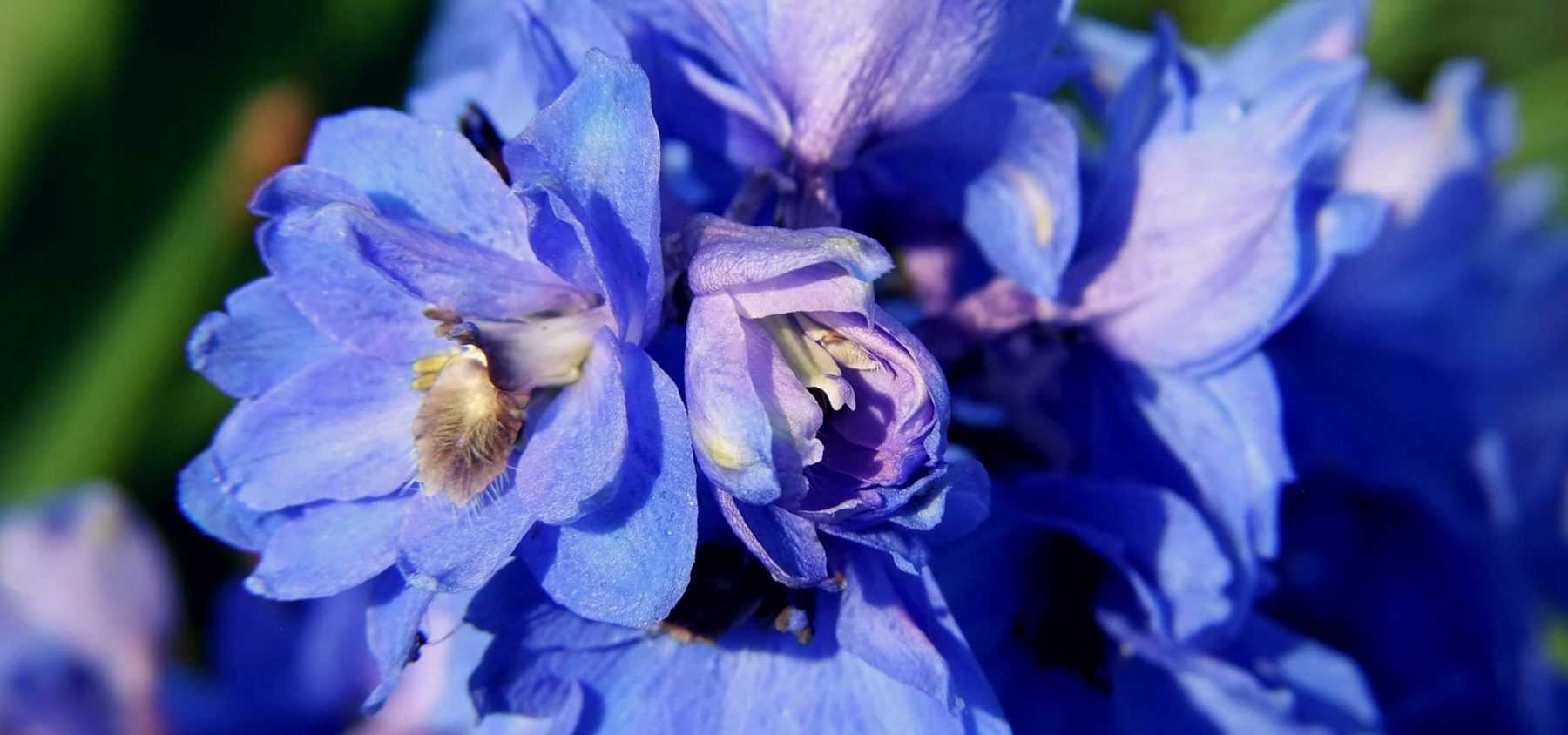
Planting and Succeeding with Delphiniums
our tips for successful cultivation
Contents
The delphinium, or larkspur, captivates us with its tall blue flower spikes that bloom in summer, but it’s a rather demanding and delicate perennial to grow… Discover how, when and where to plant delphiniums! In what type of soil, under which exposure should they be planted, and what are the essential steps for successful cultivation?
When to plant delphiniums?
Planting can be done both in autumn and spring. Avoid planting during frost or extreme heat.
Some delphinium species are annuals, so they should be sown directly in place in spring.
Where to plant them?
Plant your delphiniums in full sun! Position them in a sheltered spot, as wind could break their flower spikes. You might place them against a wall or hedge to protect them from prevailing winds.
The soil should be well-draining and light! Avoid heavy, clay-rich soils, or improve permeability by working in gravel or coarse sand. Delphiniums dislike waterlogged soil in winter, yet the soil should remain moist in summer. For abundant flowering, they require fertile, humus-rich soil—we recommend adding compost at planting time.
Place your delphiniums at the back of borders, as taller varieties can reach up to two metres in height.
Though we recommend planting them in the ground for optimal conditions, they can also thrive in pots. Choose a deep container and remember to provide fertiliser and water regularly.
Discover other Delphinium - Larkspur
View all →Available in 1 sizes
Available in 1 sizes
Available in 2 sizes
Available in 1 sizes
Available in 1 sizes
Available in 2 sizes
Available in 1 sizes
Available in 3 sizes
Available in 1 sizes
Available in 1 sizes
How to plant delphiniums?
- Receiving your plant:
If you order a delphinium in winter (between November and March) and receive a bucket that appears empty, this is normal: the delphinium is a deciduous plant, it loses its foliage during winter. The aerial part disappears, but the plant is still present beneath the soil surface. It will regrow without any issues in spring.
Outside of this winter period, if you receive a pruned young plant, there’s no need to worry, this is normal. Pruning the delphinium helps it establish better in the garden! By cutting back the stems of delphiniums, the plant will develop a more robust stump, ensuring more vigorous growth and better flowering.
Similarly, if the young plant is broken, simply trim it cleanly with secateurs just below the break so the plant can become ramified.
- Planting:
For a striking visual effect, we recommend planting them in groups rather than individually. Space each young plant 30 to 50 centimetres apart.
- Prepare the soil by loosening it with an organic fork. If your soil is heavy, it’s essential to add gravel or coarse sand to improve drainage and prevent the soil from becoming waterlogged in winter. We also recommend enriching the soil with compost to make it more fertile.
- Dig a planting hole, two to three times the size of the root ball. Then place a mixture of soil and compost at the bottom of the hole.
- Position the root ball, backfill with soil around it, and firm it down.
- Water generously.
- Mulch to keep the soil cool.
Consider staking as the tall stems of delphiniums are fragile and could be damaged by wind. While staking may not be necessary for dwarf varieties, it is essential for any variety exceeding 60 centimetres in height.
Watch out for slugs and snails: they tend to eat the leaves early in the growing season when they are still tender! You can use an organic slug repellent to protect your young plants.
Water regularly as delphiniums do not tolerate drought, and apply a little liquid fertiliser (roughly every two weeks).
Check out Pascal’s article on our blog: How to Fail at Growing Delphiniums in 4 Easy Lessons.
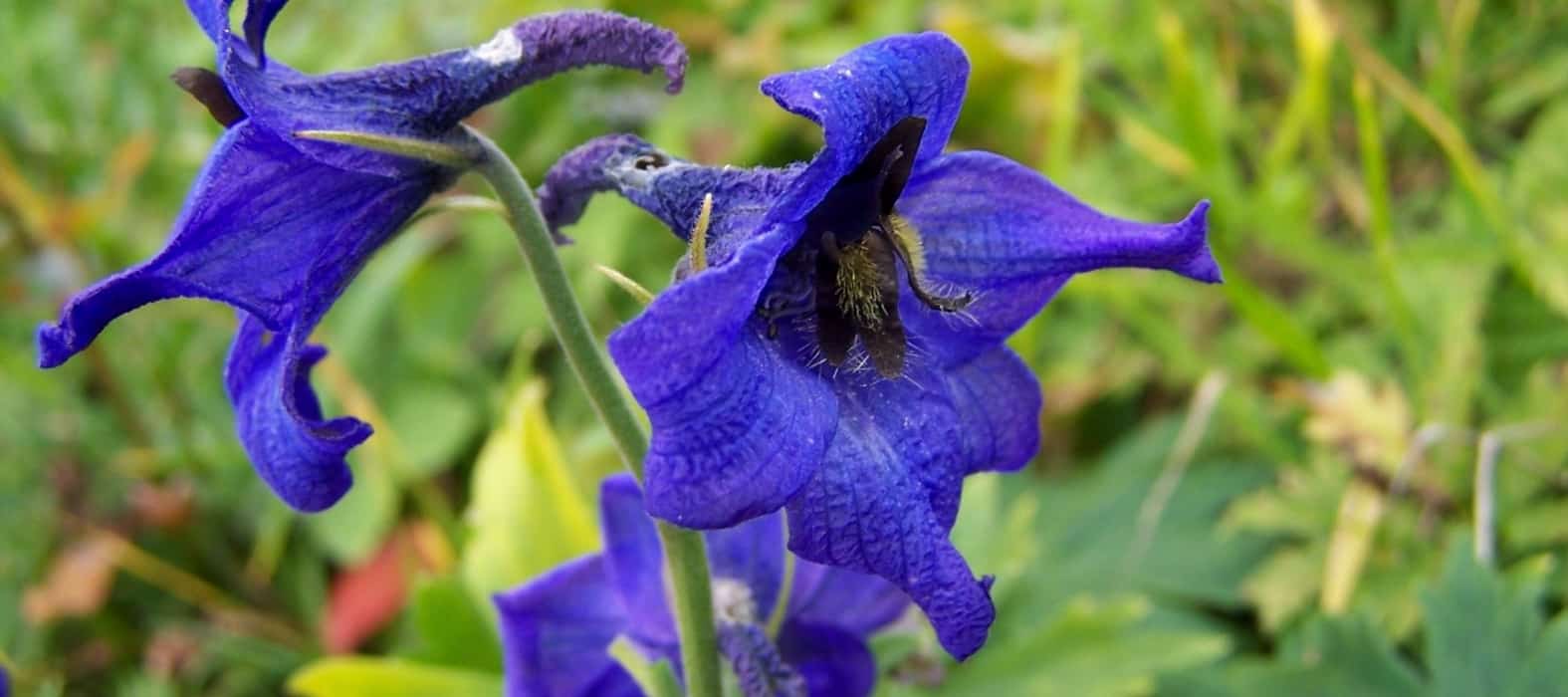
- Subscribe!
- Contents


































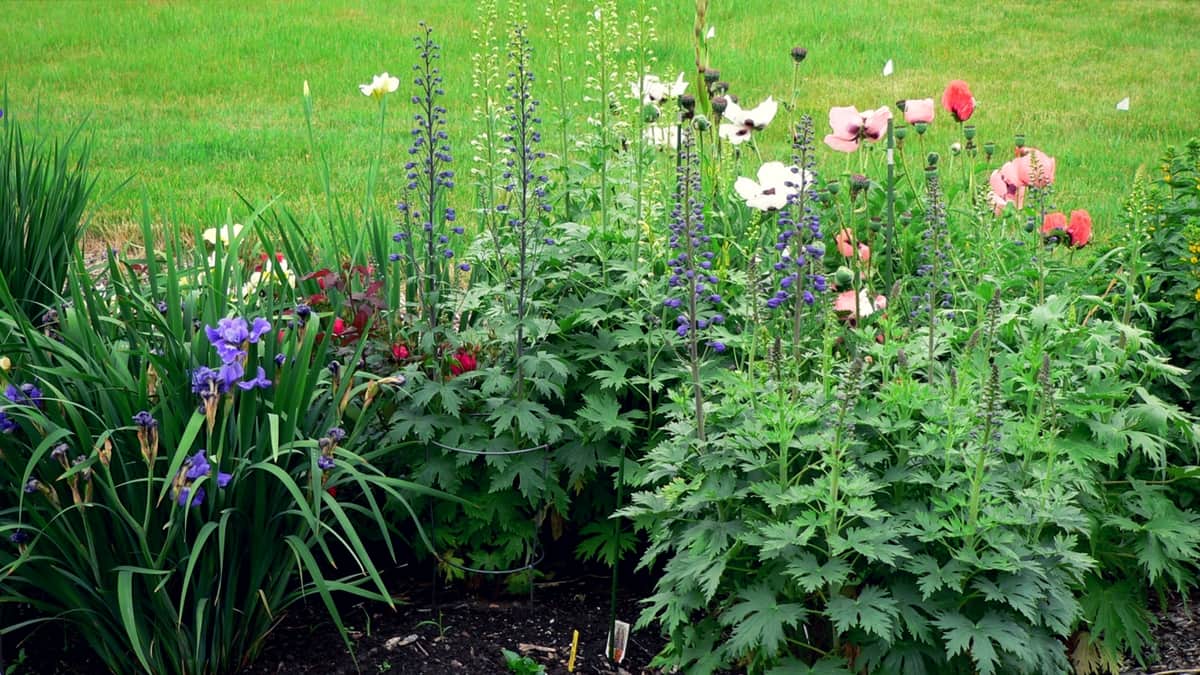


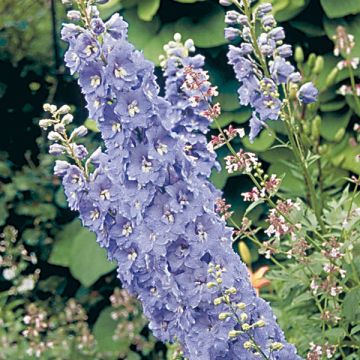

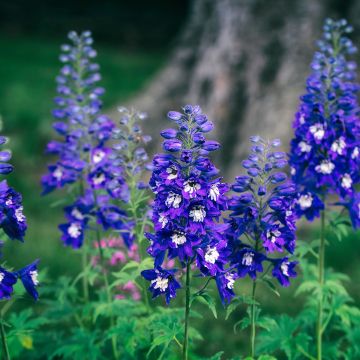
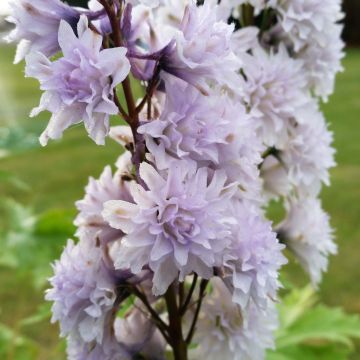
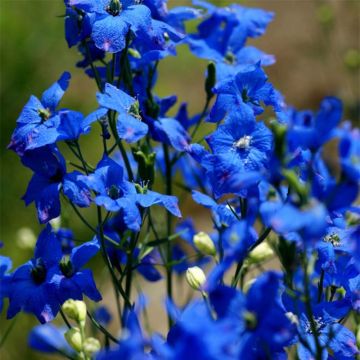


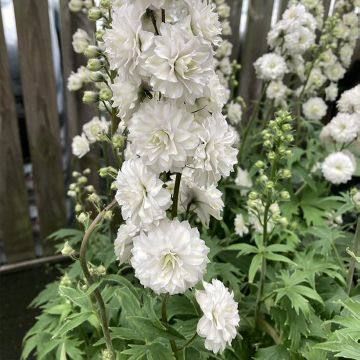
Comments